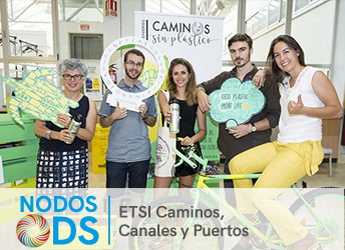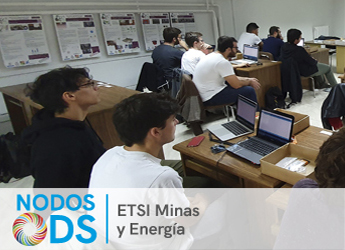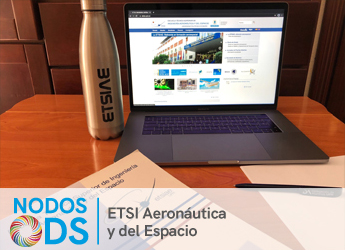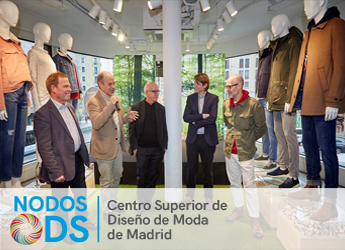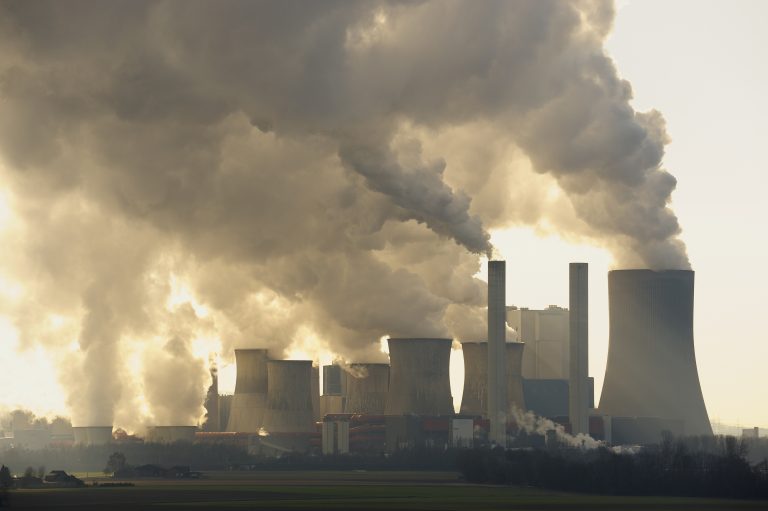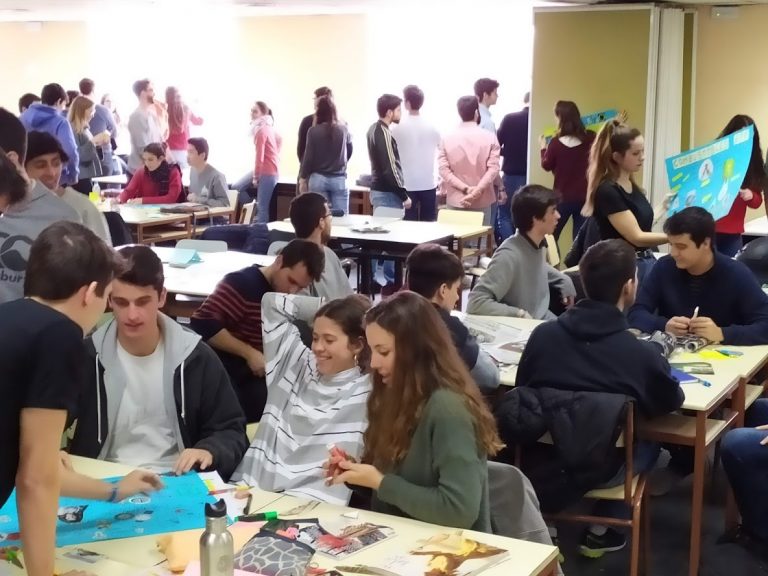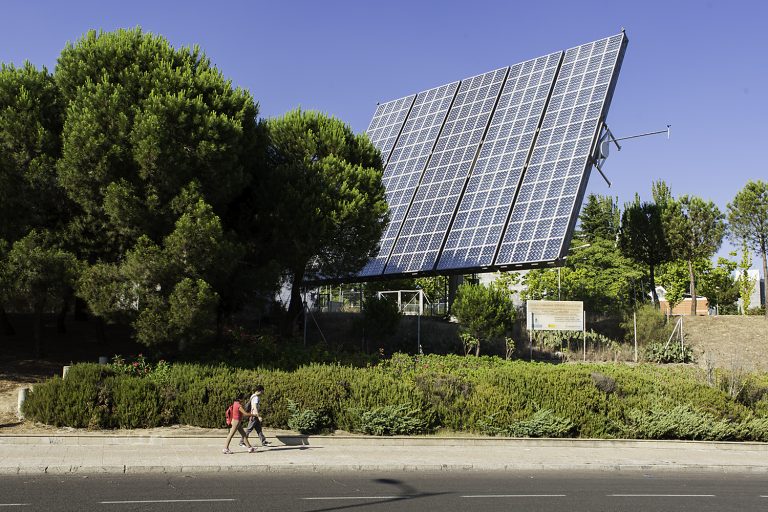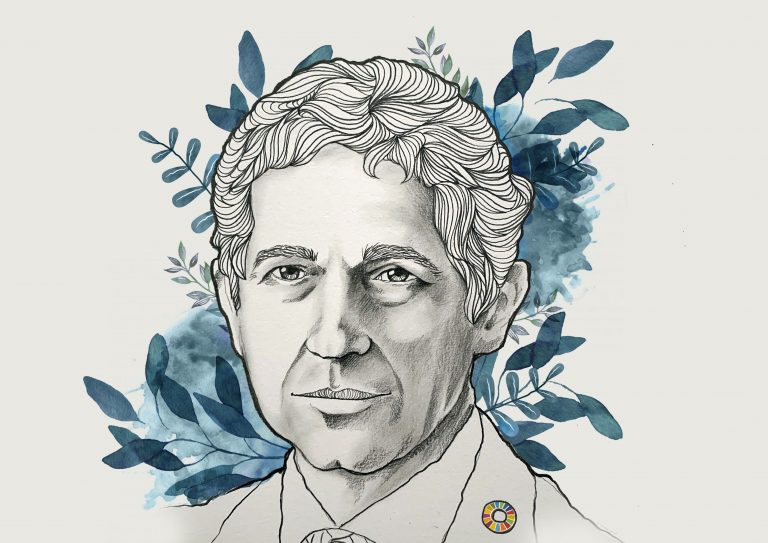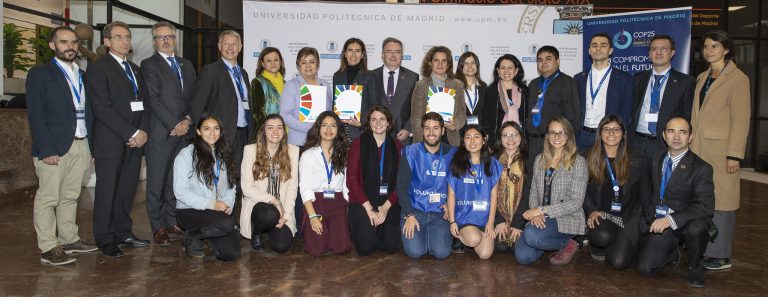Esta web utiliza cookies para que podamos ofrecerte la mejor experiencia de usuario posible. La información de las cookies se almacena en tu navegador y realiza funciones tales como reconocerte cuando vuelves a nuestra web o ayudar a nuestro equipo a comprender qué secciones de la web encuentras más interesantes y útiles.
Closing the plastic loop at UPM: a circular initiative
Lorem fistrum por la gloria de mi madre esse jarl aliqua llevame al sircoo. De la pradera ullamco qué dise usteer está la cosa muy malar.
CircularízatE was born as a project in the School of Industrial Engineers at the Universidad Politécnica de Madrid, aiming to demonstrate that circular economy is viable through the implementation of a demonstrator in the school (Escuela Técnica Superior de Ingenieros Industriales – ETSII). The main idea behind the project is to avoid waste generation and make the most of it, extending its life as well as giving it “a new life”, by collecting the waste and using it as raw material to create new products. In this way, the loop closes, eliminating waste and moving away from the linear economy in which we are currently immersed.
In order to do this, we decided to initially focus on plastic waste. Originally, we wanted to collect all the bottles and bottle caps – which are PET (polyethylene terephthalate) and HDPE (high-density polyethylene) plastics respectively –, shred and extrude them in such a way that we obtain a filament that could be used to 3D print. Thus, what is traditionally waste, a plastic bottle, could once again be transformed into raw material: 3D printing filament.
We started our project by activating our social networks and began organizing collection campaigns at the ETSII school. Around Christmas of 2020, we designed a tree out of plastic bottles to catch students; attention. However, at that time we realized about a problem: the residue existed, but it was scarce. Finding enough plastic bottles was going to be a difficult task, considering that each bottle weighs approximately 8 grams … to obtain 1 kg of plastic we needed 125 bottles! On the one hand, we were glad that there was not so much plastic waste related to bottles, but on the other, we saw a challenge to our project.
Upon arrival of the Covid-19 pandemic, the generation of waste related to plastic bottles in the ETSII school practically disappeared, meaning there was no plastic to recirculate, and, therefore, no material to carry out our project. However, what seemed at first an adversity, we managed to turn it around and make an opportunity out of it.
As a solution to the problems related to the lack of medical supplies, as result of the Covid-19 pandemic, the “coronamakers” emerged. This group of people organize themselves, selflessly and altruistically, and used their own 3D printers to manufacture PPE (personal protective equipment) during the most critical period of the pandemic. The “coronamakers” found themselves involved in the manufacture of visors, ear guards and other pieces of utility for health workers (parts of mechanical respirators), producing large quantities of material necessary to help solve the crisis. However, two types of waste were also produced: defective parts and remains of PLA (polylactic acid) – one of the plastics used in 3D printing – from cutting and part-supports.
The students of CircularízatE organized and collected this PLA waste aiming to give them a second life. In this way, in our FabLab (Manufacturing Laboratory), emerged a space where the community of students, teachers and researchers meet to develop new practices around the circular economy and process the collected plastic. This space for coexistence, which makes it possible to contribute to applied research, is called “Plastic Living Lab”.
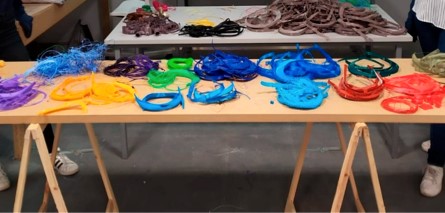
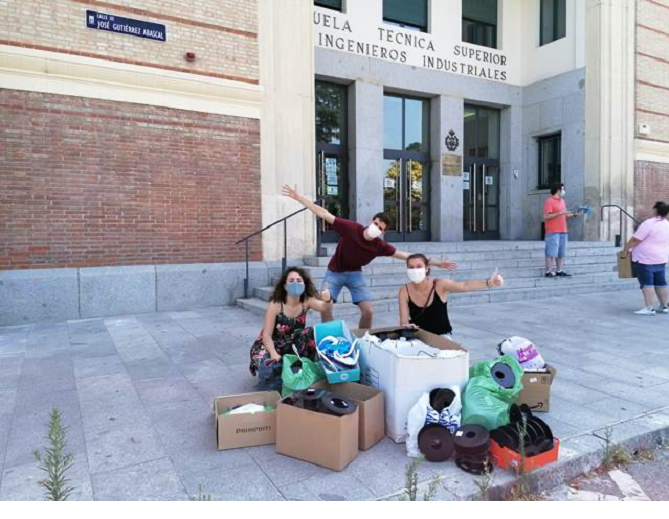
Once the material was collected, the creation of a standard procedure to process such waste was required. The procedure developed includes washing, shredding, drying and extruding said elements, and then converting it into spools with filament for 3D printing. Once we achieved the recovery of the PLA, we reviewed our action plan to return to our initial objective, beginning to design a collection system with containers to collect plastic waste from bottles, caps, 3D printing waste and other plastic waste.
Additionally, one of our objectives has always been the expansion of our project to other horizons, both within and outside the university. The grounds of our project are based on the collaboration between different areas and departments, which allows us to address the circular economy as a problem from multiple sides. The project arose in the Departments of Organization Engineering, Business Administration and Statistics, the Department of Mechanical Engineering in the ETSII, which together with the Department of Industrial Chemical Engineering and the Environment have promoted the work in CircularízatE.
Thanks to the experience and work developed in the living lab, the project has allowed the creation of the UPM Circular Campus community, which has the participation of other schools, including Industrial Design (Escuela Técnica Superior de Ingeniería y Diseño Industrial), Architecture (Escuela Técnica Superior de Arquitectura de Madrid), Telecommunications in the Southern Campus (Escuela Técnica Superior de Ingeniería y Sistemas de Telecomunicación) and Agronomics (Escuela Técnica Superior de Ingeniería Agronómica, Alimentaria y de Biosistemas), and that has the objective of expanding the scope of the project, as well as the materials and waste with which it can work. Likewise, the projection of our project begins to have an impact outside the University, participating as a proto-community for the development of the EELISA Alliance project, created through the collaboration of nine European universities. In this new adventure, we intend to replicate the work methodology in the laboratory and generate additional academic knowledge, which will have a greater impact on students and academic staff.
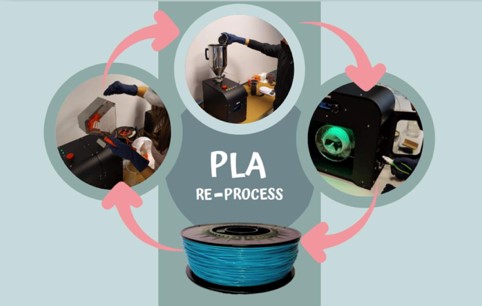

Results and conclusions
Thanks to the work in CircularízatE, different results have been achieved from different perspectives, both at the research and at the educational levels:
- Among the research results, it is worth mentioning that several publications have been issued in academic journals in this regard, in which it is pointed out that the closure of the loop of 3D printing plastic (PLA) is mechanically and chemically viable.
- Gil Muñoz, V., et al., (2020), Applied Sciences, 10(24) – https://www.mdpi.com/2076-3417/10/24/8967
- Moreno, E., et al., (2020), Proceedings, 69 (19) – https://www.mdpi.com/2504-3900/69/1/19
- Beltrán, F.R., et al., (2021), Polymers, 13(8) – https://www.mdpi.com/2073-4360/13/8/1247
- Regarding the academic field, teachers and students have been working in the laboratory processing plastic, thanks to the collaboration with the coronamakers for the donation of their 3D printing waste and subsequent processing of the same. At the moment, around 15 kg of PLA have been processed, and the number of recycling cycles is being experimented with.
- In addition, CircularízatE has a group of students fully committed to the development of the initiative, through the dissemination and communication of the project. Some of them have the opportunity to collaborate with the project through the development of final degree and master’s degree projects, as well as through grants for collaboration with the project awarded by the UPM. Many of the previous results are collected in different final undergrad and master thesis (TFTs)
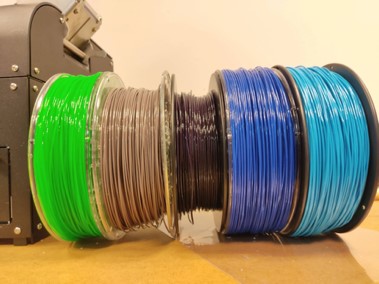
Relation to Sustainable Development Goals
SDG4: Quality education
This project contributes to the development of new skills in students and so that they expand their knowledge outside of the classroom.
SDG12: Responsible consumption and production
By closing the loop, we are eliminating the need to use virgin material by incorporating residual material into production and therefore contributing to responsible and sustainable production.
SDG17: Partnerships to achieve the objectives
By expanding the initiative to other schools and campuses, we seek to promote research in different areas, generating a greater impact on the university community, while contributing to the reduction of waste in the university.
Lastly, thanks to the EELISA protocommunity and the work in CircularízatE, additional SDGs are also impacted and promoted, such as SDG 4.7 and 12.8 since it is guaranteed that the community acquires the theoretical and practical knowledge necessary to promote sustainable development and their adoption gives their lifestyle.

